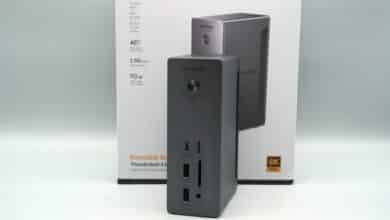
You’ve probably heard the abbreviation OEM before, but do you know what’s behind the OEM meaning? This abbreviation is especially common in the software and hardware industry and is often used in connection with licensing and the integration of components.
OEM: Meaning and Definition
OEM is an abbreviation for Original Equipment Manufacturer, which means original equipment manufacturer in German. It refers to companies that produce products or components that are then used by other companies in their finished products. These manufacturers usually produce products according to the exact specifications and requirements of the client, which then markets and sells the products under its own brand. This client is usually a so-called branding partner. OEM products can range from electronic components to automotive parts to household appliances.
Origin of the abbreviation OEM
The OEM concept originated in industrial manufacturing, particularly in the automotive industry. Traditionally, OEMs were contracted by automakers to produce specific components or parts for their vehicles. Over time, the term OEM has expanded to include other industries and products. OEM relationships allow companies to optimize production by reducing costs and focusing on their core competencies. At the same time, they enable the delivery of high-quality products. OEM products are now firmly established in many industries and play a crucial role in companies’ value chains.
The importance of OEM first became apparent in the late 1970s, when this acronym was used in connection with the production of software and hardware components in the IT industry.
OEM importance in the software industry
OEM plays a significant role in the software industry. OEM versions of operating systems are often used by computer manufacturers and are specifically designed for the device hardware. They are pre-installed, which allows users to start using them immediately. Similarly, with mobile devices, OEM applications are often pre-installed and enhance the user experience. They also allow mobile device manufacturers to provide additional features and services to their customers.
OEM in the hardware industry
OEM is also very important for the hardware industry. Here, companies produce OEM products or components that are then incorporated into other companies’ end products. Some examples of OEM hardware are:
Processors and chipsets
Manufacturers such as Intel and AMD produce OEM processors that computer manufacturers build directly into their systems. In addition, OEM chipsets are used in various devices to ensure high performance and smooth compatibility.
Peripherals
Here, manufacturers produce OEM hardware, including keyboards, mice and printers, which are then marketed under other companies’ brand names. This practice allows computer manufacturers to complete their systems with OEM peripherals to provide their customers with an all-around coordinated solution.
Other industries where OEMs matter
As you can imagine, there are many industries where OEM is of great importance. Here are just a few examples:
- In the electronics industry, manufacturers actively integrate OEM components such as displays, batteries and cameras into their devices.
- The automotive industry relies on OEM parts such as engines, transmissions and electronic systems.
- In the medical technology industry, companies integrate OEM products such as ultrasound equipment, monitors and surgical instruments into their solutions.
- Companies in the telecommunications industry use OEM networking equipment such as routers, switches, and modems, and market OEM mobile devices under their own brand names.
- Manufacturers of OEM home appliances produce appliances such as washing machines, refrigerators, and dishwashers and market them under their own brand name. At the same time, they use OEM components such as motors, controls and sensors in these appliances.
- In the furniture industry, OEM components such as drawers, handles, and hinges are developed and integrated into the products of furniture companies.
As you can see, OEM partnerships open doors. They allow companies to develop and produce their products in a smart way – drawing on the expertise and resources of other companies. Whether we’re peering into the world of software development, looking at hardware production, looking around electronics manufacturing, feeling the pulse of vehicle manufacturing, or tracing the creative contours of furniture design, the shaping hand of the OEM can be seen everywhere. Such partnerships not only succeed in bringing products to market, but do so in a way that focuses on and meets consumer needs.



